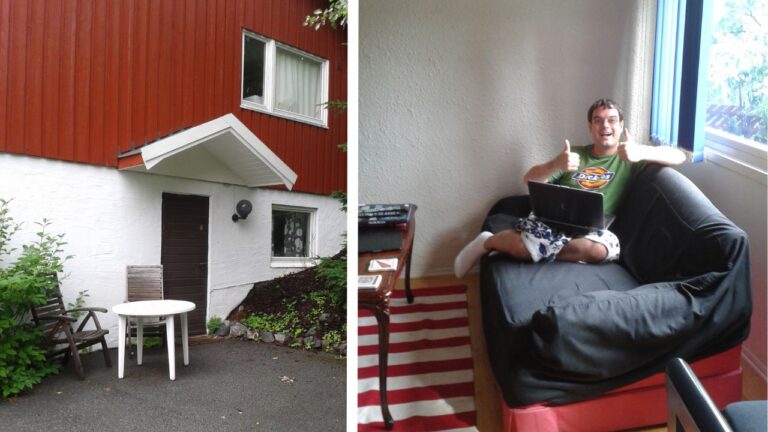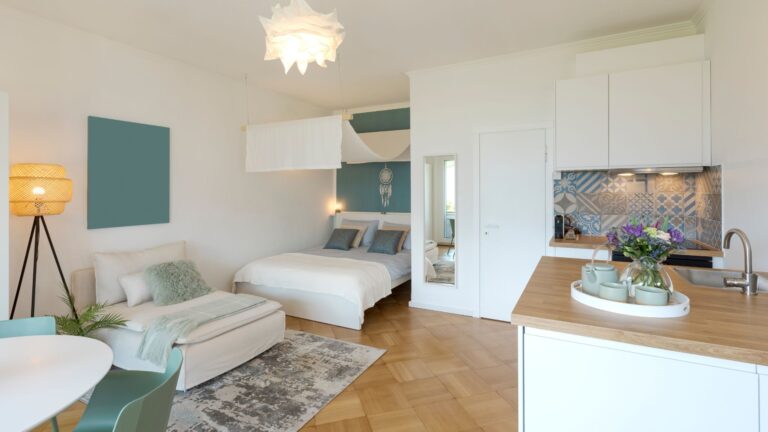Studio apartments in Norway are a popular choice among new arrivals, students, and young professionals. Here's what you should know before signing a rental contract.
Despite exchange rate movements in recent years, moving to Norway remains an expensive undertaking. One of the biggest expenditures is almost always going to be finding somewhere to live.

Even if you intend to stay in the country long-term, buying a house in Norway is not recommended for new arrivals.
This is largely due to the complexities of the housing market, the high costs associated with purchasing property, the need for a substantial downpayment, and the difficult of obtaining a mortgage without being ‘in the system'.
For those who are just getting settled, renting a place to live is often the most practical and financially viable option.
Introducing the Norwegian Hybel
The cheapest way to rent is to rent a room in a shared house or apartment, but that's not something that many people would like to consider once their student years are behind them. This is where the ‘hybel' comes in.
A ‘hybel' is a small, self-contained living space that is typically rented out to individuals. It is akin to a bedsit or a studio apartment and is especially popular among students and young professionals due to its affordability and convenience.
‘Hybler' (the plural of hybel) are usually compact, combining living, sleeping, and kitchen areas into one room, with a separate bathroom, and its own entrance.

They are often, but not always, converted basements of larger houses, rented out by the owner who more often than not lives in the rest of the building. However, apartment blocks of studio apartments can also be called ‘hybler'.
How to Rent a Hybel
Generally speaking, most advice on finding property in Norway tends to start and end at Finn.no. As Norway's everything marketplace, Finn has a great selection of accommodation and is usually the best place to start your search.
However, hybler are not limited to Finn.no. Another good place to search online is hybel.no. Here, you're more likely to find hybler and other smaller accommodations including flat shares, often with shorter term rental agreements and lower deposits.
If you're a student, the international office of the university or institute will be the best place to start. Here, you'll get advice, assistance, and possibly a curated list of places to consider.
It's also possible to find a hybel simply by asking around. However, be wary of unscrupulous landlords! Always get a written contract and, if you don't speak Norwegian yet, make sure you understand what it says.
Regardless of the contract, there are some aspects of renting a studio apartment that are protected by law. This includes access to a bathroom and toilet, even if it isn't part of the studio. Windows and escape routes are also required.
How Much Does a Hybel Cost?
How long is a piece of string? Seriously, the cost of a hybel varies on so many factors. The most important include the specific city, the proximity to the city centre, proximity to public transport, and the student demand in the area.

In Oslo, you're unlikely to find anything for less than NOK 7,500 per month, although in much of the city the rents are in to five figures.
Here in Trondheim, a hybel starts from approximately NOK 5,500, but increase to NOK 8,000 if you want to be close to the city centre.
These are just approximate amounts, so it's best to have a quick look at Finn.no or Hybel.no to get an idea for the area you're interested in.
Advantages of Renting a Hybel
Affordability: Hybler are often more affordable than larger apartments or houses, making them an attractive option for those on a budget.
Simplicity: With limited space, hybler encourage a minimalist lifestyle, which can be liberating for those looking to declutter and simplify their lives.
Location: Many hybler are located in central areas, close to universities, workplaces, and amenities, reducing the need for long commutes. It also provides experience of living in a particular area, before you decide on a longer-term choice.
Flexibility: Renting a hybel often comes with shorter lease terms, providing flexibility for those who may not be ready to commit to a long-term rental or property purchase.
Things to Consider Before Renting a Hybel
Space: Evaluate whether the limited space of a hybel will meet your needs. Consider your lifestyle and how much space you require for daily activities and storage.
Utilities: Check what is included in the rent. Some hybler come with utilities included, while others do not. Ensure you understand the full cost of living in the space.
Furnishings: Many hybler are rented furnished. Verify what is provided and the condition of the furnishings. If the hybel is unfurnished, factor in the cost and hassle of buying and moving furniture, especially if the lease is short.
Privacy: Hybler in larger buildings or shared houses may offer less privacy than standalone apartments. You will likely have your own entrance, but if not, consider the noise levels and the presence of any common areas.
Lease Terms: Review the lease terms carefully. Note the duration, the notice period required for termination, and any penalties for breaking the lease early.
Have you ever rented a hybel in Norway? If so, I'd love to hear your experiences and advice down in the comments.

